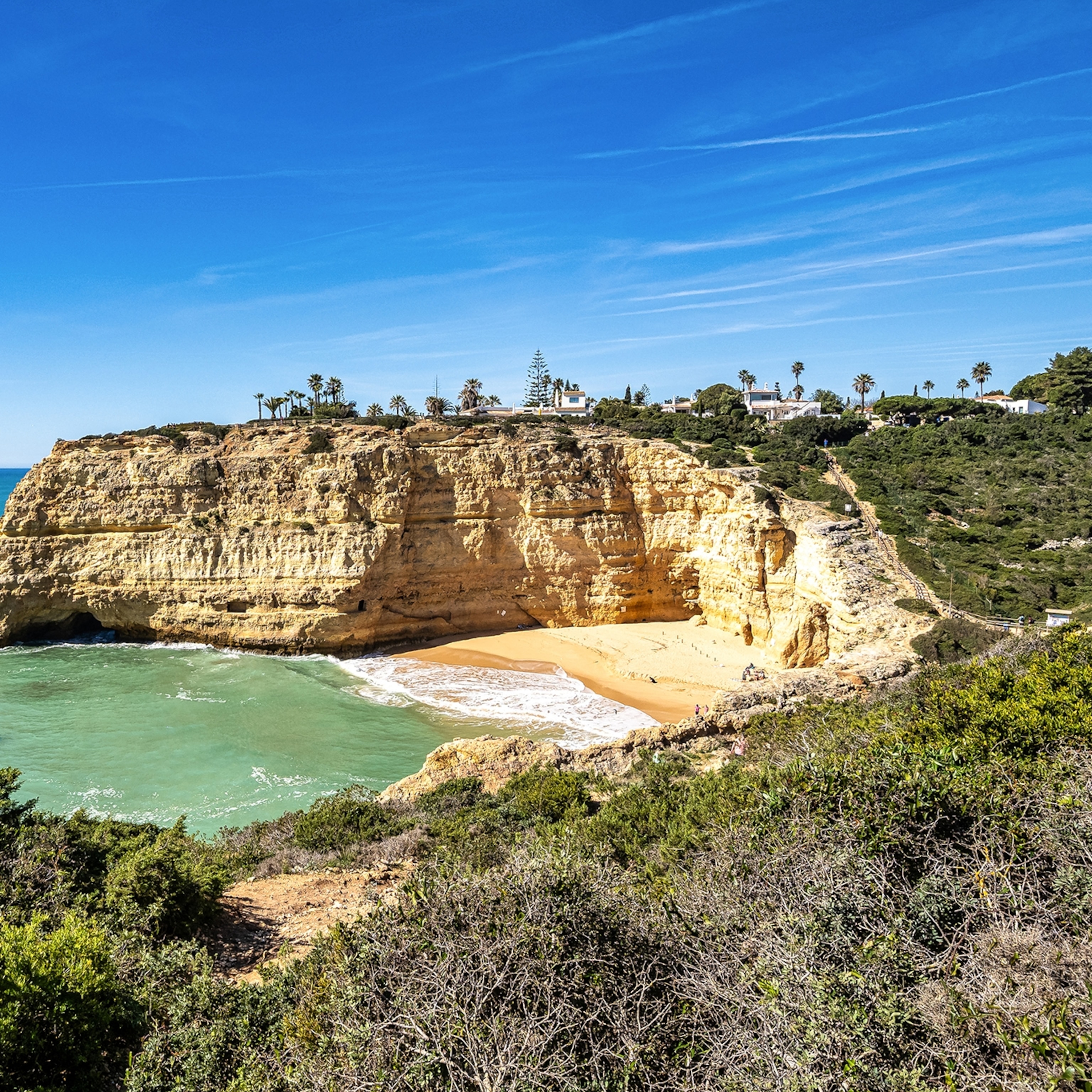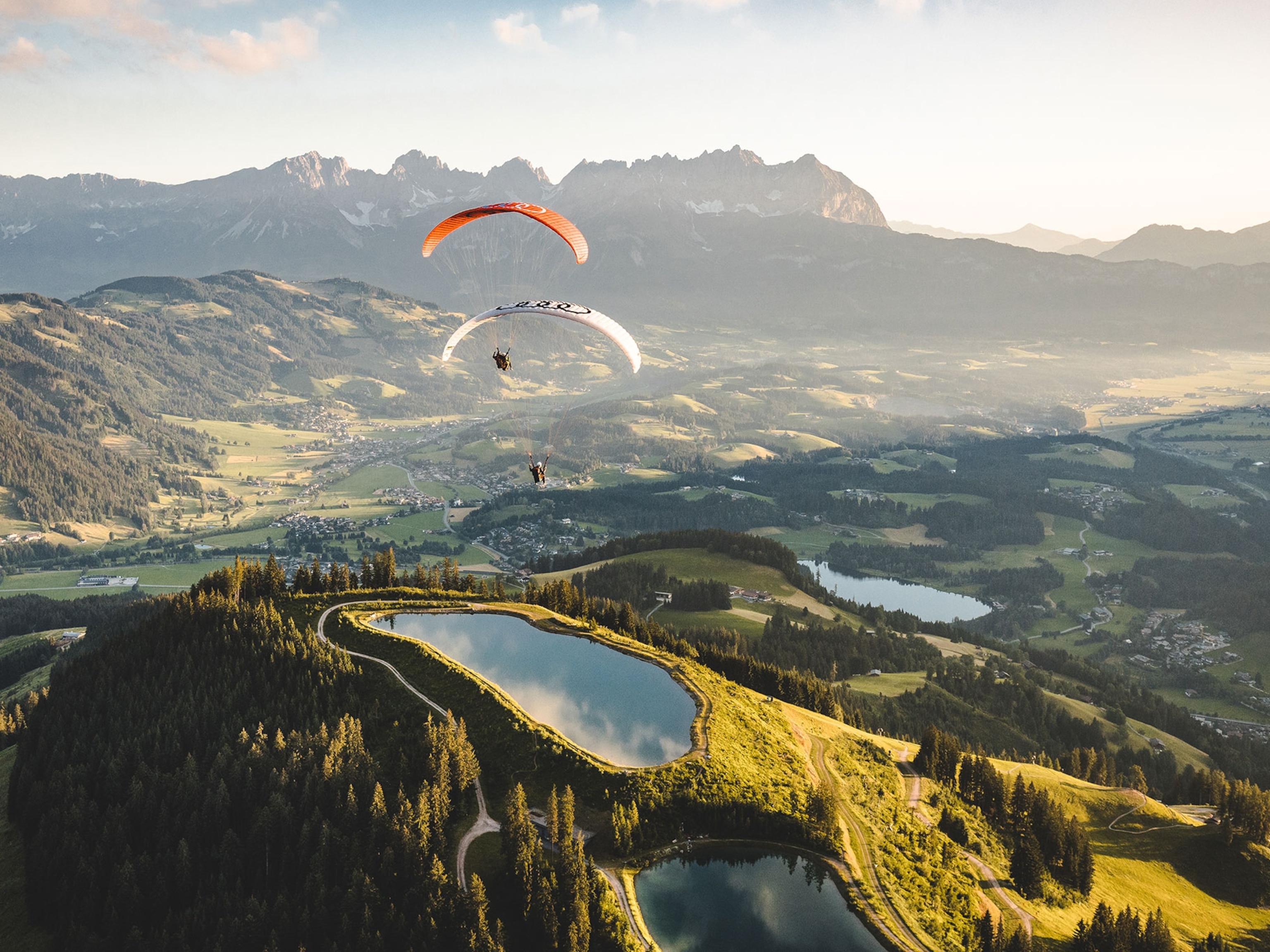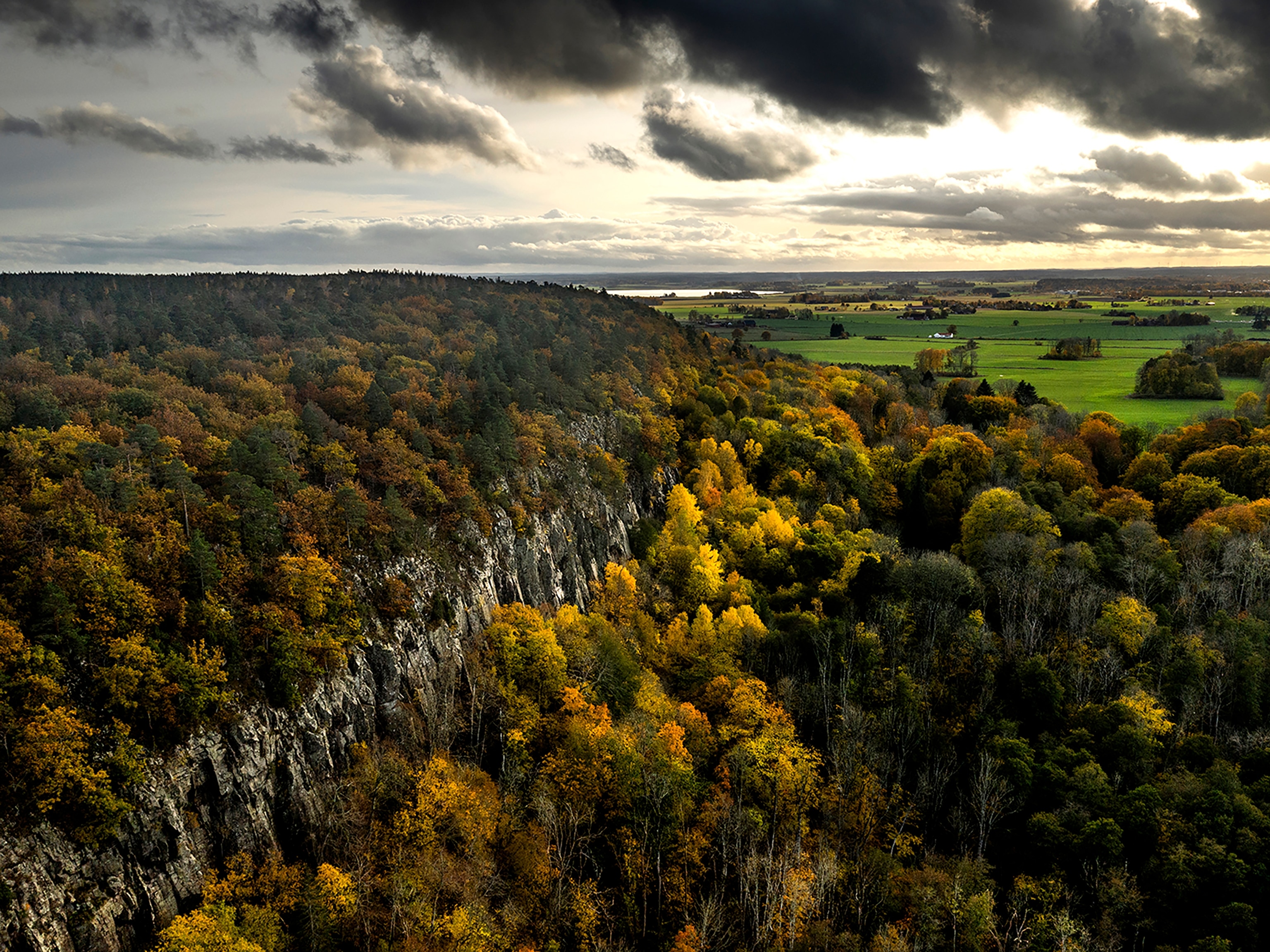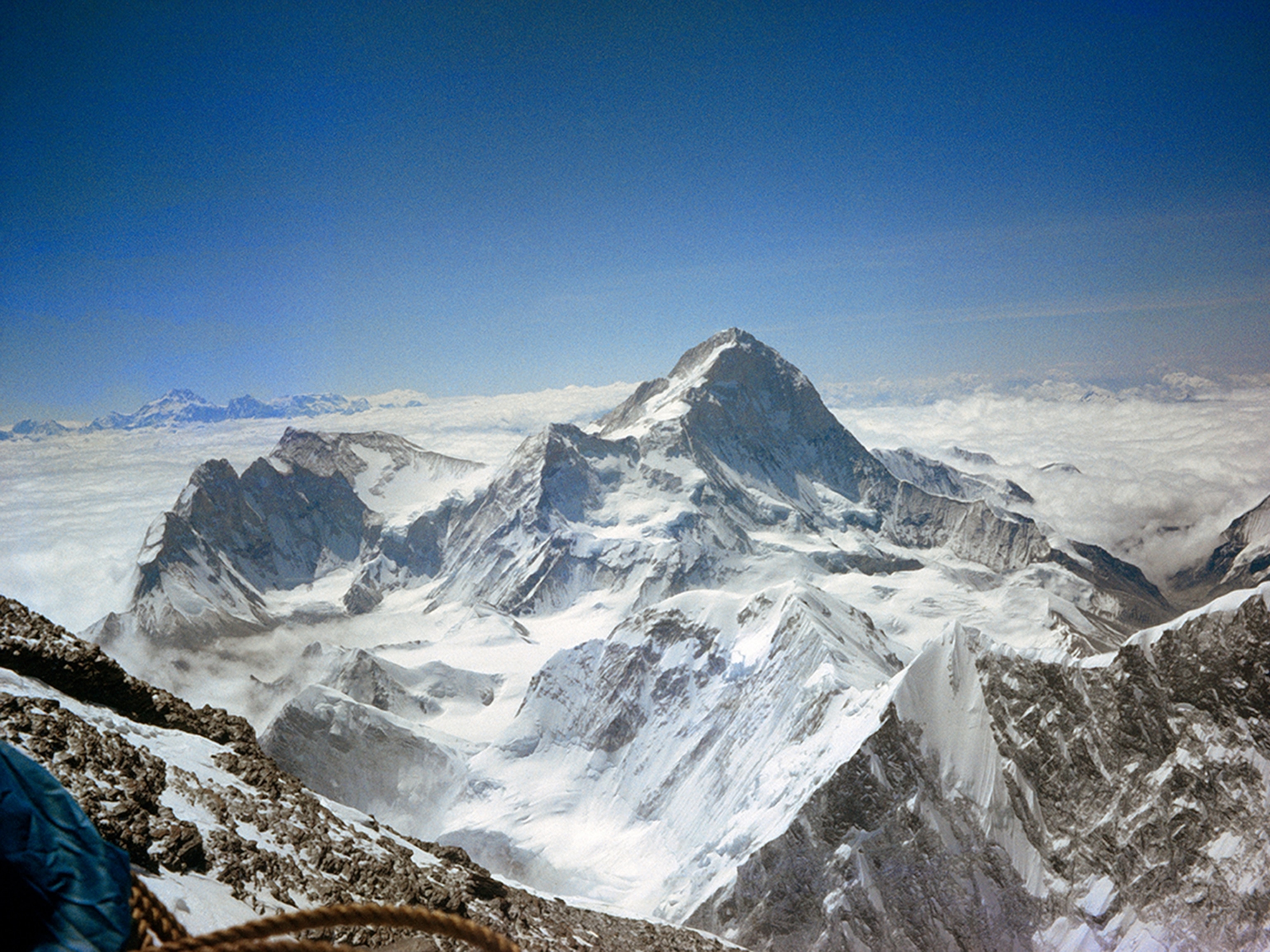
A New Way to Explore Croatia’s Coast by Land and Sea
Seatrekking combines hiking and diving into a single endeavor—made possible by an innovative, watertight rucksack—for a land and sea adventure.
Lightning cracks across the Adriatic Sea, flashing over the white cragged peaks that form the mainland’s shore. Wind cut through the trees. Our hammocks began to sway. The water, so clear earlier that day, whipped into black waves. We were camped along an isolated cove on the Croatian island of Cres, a mountainous archipelago whose ridges were covered in ancient oaks and rambling pastures. Miles from anywhere, as the rain began in earnest, Bernhard Wache remained unruffled.
Wache, a German designer and free-diver, was on Cres in pursuit of a dream: “We wanted to escape everyday life,” the 46-year-old says. “We were looking for a way to feel what’s essential again.” Wache had spent years figuring out how to merge diving with hiking.
He named the new sport seatrekking. Unlike competitive free-diving, where divers are often clipped to safety lines and the focus is on setting records, seatrekking—diving unmoored in the open ocean—has a very different emphasis. “We travel along the coastlines, below the water and above,” Wache explains, spending five to six hours diving and swimming for miles. Seatrekkers carry all their necessary survival gear, including local grappa, with them, in inflatable bags so that “the nights are spent on the beach beneath the stars.”
The first iteration of what would become a lifelong obsession to design watertight gear for the sport was a simple garbage bag that he tied around a sleeping bag and then to his foot. After that, he couldn’t let go of the idea of diving with camping gear. “I always wanted more time in the ocean,” says Wache, a veteran snorkeler and freediver, “going the most direct, puristic way I could imagine, without technology, boat, or backup.”
For a decade, he tinkered with ideas for how to keep his gear dry, sewing and gluing prototypes by hand in his basement. Finally in 2011, he contracted a company in Munich to make aluminum molds, and started commercial production. “Some people make a house, or a family,” Wache says. “I made a rucksack.” He named the new company Aetem, a portmanteau that plays off the German word for "breath."

Although Wache has seatrekked around the world, Cres, where the modern asphalt highway is as narrow as the ruined Roman road beside it, is one of his favorite places, because of its clear water and abandoned coastline. Early one morning we set off down a hiking trail near Beli, one of Cres’s oldest villages. The trail wound through grassy slopes beneath live oaks. The crickets stopped chirping as we walked by into the dew and starting again as soon as we’d left wet footprints behind. We reached a quiet cay with gray pebbles running from the forest to the clear blue sea.
At the water’s edge, Wache struggled into a wetsuit—though the Adriatic is warm, the deeper you dive, the colder it gets. He put on booties, fins, and a jacket, tucked his long hair under a mask and snorkel, and finally stuck a red and white diver flag into his 65-liter backpack, strapping its leash to his ankle. The Aetem pack, made from heat-pressed layers to avoid seams, has one chamber that rolls like a classic drybag, intended for storing wet things, and a larger cavity for dry camping gear, which is gas-sealed. Wache blew into this section till the backpack expanded like a balloon. Then he slid into the water and with a kick disappeared, leaving the bag bobbing along behind him.
Just a few feet below the surface, the color of the water changed. Soft algae swayed over the hills and valleys of the ocean floor. Red flowers sprouted along the submerged cliff walls, and sea anemones curled. As Wache lay along the ocean floor, an octopus decided to ride along on his shoulder.
The pressure has a big impact on our senses, and a few hours of seatrekking can have a startling effect. “I come to this rhythm between breathing and diving,” Wache explains. “I don’t have to think about it anymore. I come up, I go down, and it’s not separated. When you come in this flow, and it’s afternoon, and the sun comes in this absolutely clear water, the rays go deep in the ocean. You move in this light,” he says, “you think are you part of this material, of light in the deep.”

After a mile or two, the sharp cliffs recede into a forgotten shoal, just big enough to crawl out of the water and eat lunch. We pull out rye bread and honey, and sit tucked into the shade. The afternoon blurs as our eyes readjust to the surface. You could never walk to this spot, and it would be difficult to anchor a boat along the rocks; we’re tired but happily marooned.
Wache prepares for these trips by poring over Google maps, which he’s printed out in small scale, cut up, and taped together into a simulacrum of the island. He pours over one now with Danko Skalamera, who lives on Cres, and will soon be guiding tourist trips for Aetem. Skalamera seems to have the island’s bays and coves memorized. They both enjoy the game of trip preparation, and for the three days that we’re seatrekking, frequently change the plan based on the weather and the chance to dive in choice coves. There’s a childish thrill to paddling along with one eye on the shore looking for a place you might like to hang a hammock. Skalamera is new to seatrekking himself, but he’s already hooked. “I like that this sport doesn’t have borders,” he says. “You’re not hiking and then reach the sea and have to leave your bag. You have everything with you. You have your autonomy, and you go with the elements. If you like somewhere you can stay there for days.”

In June, Aetem offered its first seatrekking trip, and they plan to run five more this year on Cres and Elba. But Wache seems ambivalent about growing the business. It’s clear his passion was in creating the idea. “These bags are an invention that opens up new worlds.”
One night, sitting on beach stones still warm from the day’s heat as the sun sets over the Adriatic, Wache looks at our gear, spread along the shore below the dense underbrush, a strange sight on this deserted beach. He gestures out at the sea and says, “I think in wilderness we come to ourselves. That is what I like about seatrekking. It confronts people with this power of nature.”
- National Geographic Expeditions
Getting There
Transportation: Turkish Airlines flies to Rijeka, Croatia. From Rijeka, take a ferry to Cres.
When to Go: It’s possible to go any time between May and October, but the sea is the clearest in May and September.
Trip Information: Costs vary depending on the duration and route. See the Aetem website for more information about the trips and the backpacks.
Lois Parshley is a freelance journalist and photographer. Follow her adventures on Twitter @loisparshley.







